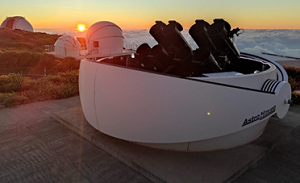GOTO: A New Gravitational Wave Telescope
- 23 Jul 2022
A team of scientists in the UK has developed a new telescope to track down sources of gravitational waves for the first time.

- The new telescope, named the Gravitational-wave Optical Transient Observer (GOTO), is made up of two identical arrays deployed on opposite sides of the planet — one on La Palma in the Canary Islands, and the other in Australia.
- Gravitational waves are created when two black holes or neutron stars in close orbit - each tens of times heavier than the sun - violently collide.
Current Observational Technique unable to locate Source
- There are fleets of telescopes all over the world available to look towards the skies when gravitational waves are detected, in order to find out more about the source. But as the gravitational wave detectors are not able to pinpoint where the ripples come from, these telescopes do not know where to look.
GOTO: An Intermediary between Wave Observatories & Telescopes
- If the gravitational wave observatories are the ears, picking up the sounds of the events, and the telescopes are the eyes, ready to view the event in all the wavelengths, then GOTO is the bit in the middle, telling the eyes where to look.
- GOTO is designed to fill this observational gap by searching for optical signals in the electromagnetic spectrum that might indicate the source of the gravitational waves (GW) - quickly locating the source and using that information to direct a fleet of telescopes, satellites and instruments at it.
- As most GW signals involve the merger of massive objects, these ‘visual’ cues are extremely fleeting and must be located as quickly as possible, which is where GOTO comes in.




